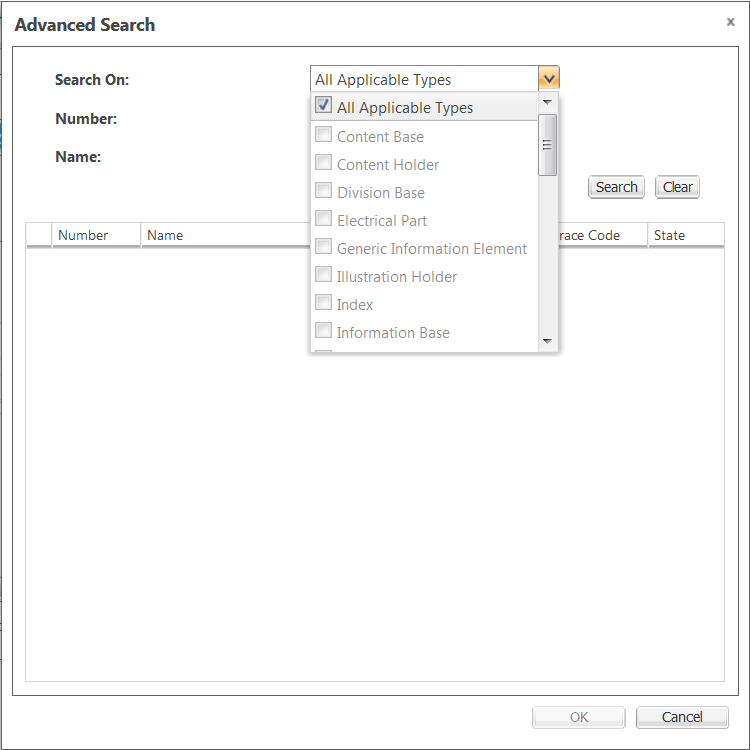Part Structure: Defining Valid Context Types for Service Effectivity
Product: Windchill Service Information Manager, Windchill Service Parts
Release: 11.0 F000
Benefit
Windchill Service Information Manager allows administrators to define valid service effectivity contexts. When these contexts are defined, only valid contexts are presented when searching for context objects in the Manage Applicability window.
Additional Details
Administrators can define valid service effectivity contexts by entering a type in the ServiceEffectivityConfig.xml file.
<ServiceEffectivityContextTypes>
<Type>wt.part.WTPart|com.acme.myServEffContext</Type>
</ServiceEffectivityContextTypes>
When users apply filters in the Advanced Search option on the Service Effectivity tab in the Edit Filter window or the Add Service Effectivity window, the Advanced Search option limits the search to the types corresponding to the properties defined in the ServiceEffectivityConfig.xml file. If there are no values in the file, the system defaults to WTPart as the only valid context.
• If the authoring system is only for InService, it should be configured to only allow product hierarchy roots and product hierarchy nodes as valid contexts. This eliminates any confusion or mistakes from authors creating invalid data.
• If the authoring system is for both InService and other business cases, customers should include both of these types in the list of supported types. Data with invalid effectivity contexts is sent to InService. InService ignores any invalid effectivity records, which could result in invalid applicability being displayed in the delivery system. Data management processes should be implemented to ensure valid data is being sent to the delivery system. Segregating data intended for delivery from data intended for other purposes could minimize confusion.
• If the authoring system is not authoring data for InService, there is no need to restrict the valid effectivity context unless customers have specific business processes that call for this.
For more information, see
Manage Applicability.

